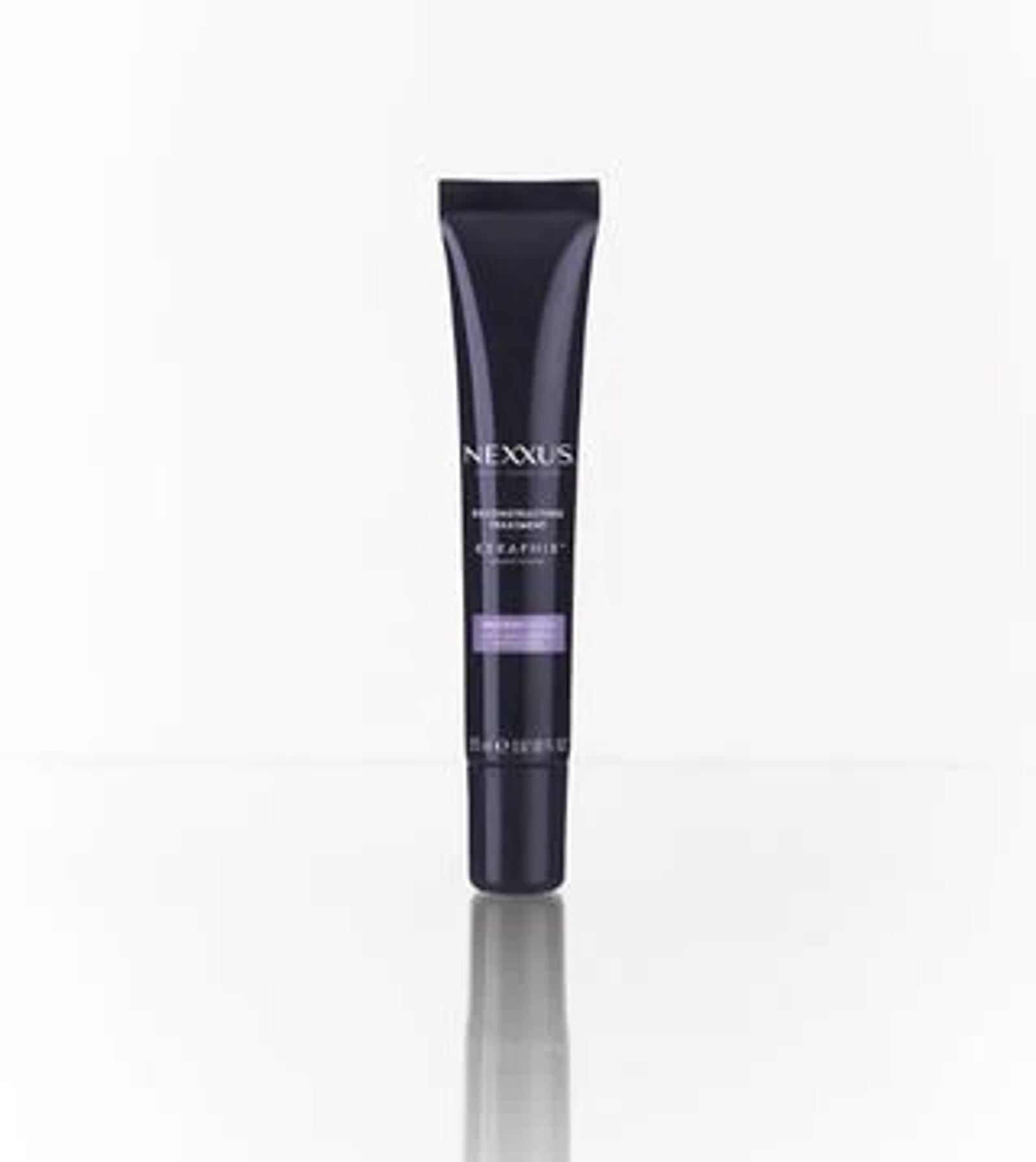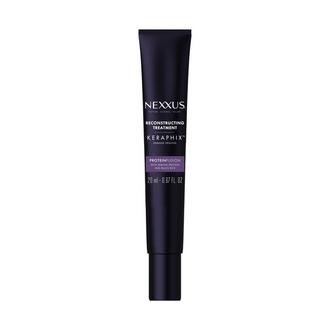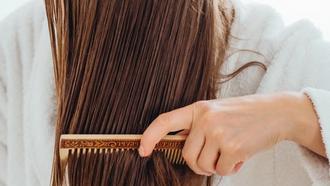A $100,000 Machine Fixed My Damaged Hair – Fix Yours For $15

Photo: Getty
My hair gets frizzy in humid weather, and the ends look scraggly if I don’t glop on serum. Is it damaged? I don’t think so. But a $100,000 differential scanning calorimeter doesn’t think; it knows. And apparently, I’ve got a problem.
Let me explain: A few months ago, Nexxus asked me to try a new reparative protein treatment its scientists had developed. I didn’t think I needed it, but the company offered to have its researchers test my hair for damage, just to be sure. So I shipped a lock to a lab in Port Sunlight, England, and a few weeks later, I followed it across the pond for a full report.

Nexxus Keraphix Damage Healing Shampoo, and Conditioner
When I arrived, Fraser Bell, a scientist for Unilever, the parent company of Nexxus, told me that he and his fellow researchers had tested my strands at a molecular level (the differential scanning calorimeter was just one machine they used) and deemed them “vulnerable.”
They were leaching protein, which is a problem because the stuff makes up about 90 percent of hair’s structure. Most of this comes in the form of keratin, which you’ve probably heard about, but there are 20 other amino acids that combine in different ways to create more than 100 other types of protein present in hair’s cortex and cuticle.
As strands are exposed to air, water, sun, and heat, the structure degrades and hair begins to lose protein; when enough goes missing, the texture changes and the outer cuticle weakens, leading to more protein loss and a vicious cycle of bad-hair days.
“You can’t just sprinkle any type of protein on a hair and hope it’ll fix your problems.”
Reintroducing protein via products may help, but which form to add? “You can’t just sprinkle any type of protein on a hair and hope it’ll fix your problems,” says Trefor Evans, the director of research at TRI Princeton, an independent organization that researches cosmetic products. “That would be like trying to rebuild a crumbling brick house by throwing bricks at it.”
But Nexxus researchers think they’ve figured out the ingredient that will do the trick. “By analyzing hair protein at the molecular level—using some of the same tools we used to study your hair—we found that glutamic acid, a type of amino acid, is especially important for repairing damage,” Bell explains. It’s now included in Nexxus’ Keraphix system, along with other beneficial forms of protein. “Typical damage-repairing products might contain 0.1 percent protein, but we’ve created a treatment that has 12 percent,” Bell says of the new Keraphix Hair Reconstructing Treatment (one step in the complete Keraphix system).

Nexxus Keraphix Damage Healing Reconstruction Treatment
The company sources some of this from rice, which isn’t exactly a beauty-world secret. Bell offers the example of the Yao women of Huangluo, a village in China: They shampoo regularly with fermented rice-cooking water and are renowned for having floor-length black hair impervious to normal signs of aging, like graying and dryness.

The Yao women of China are famous for their long hair, which they wash in fermented rice-cooking water
Photo: Getty / VCG / Getty Images
I have zero desire to set up a rice-water fermentation station in my house, so after I got the bad news about my protein problem, I started using the Keraphix products. The shampoo and conditioner definitely leave my ends looking healthier, but the standout is the weekly reconstructing treatment. In the days after I use it, my hair is less puffy and feels less coarse. Will it grow to Yao lengths if I keep using it? Who knows—I’ll be happy enough if it just stays frizz-free.
A version of this article appears in the December/January 2018 issue, on newsstands now.






